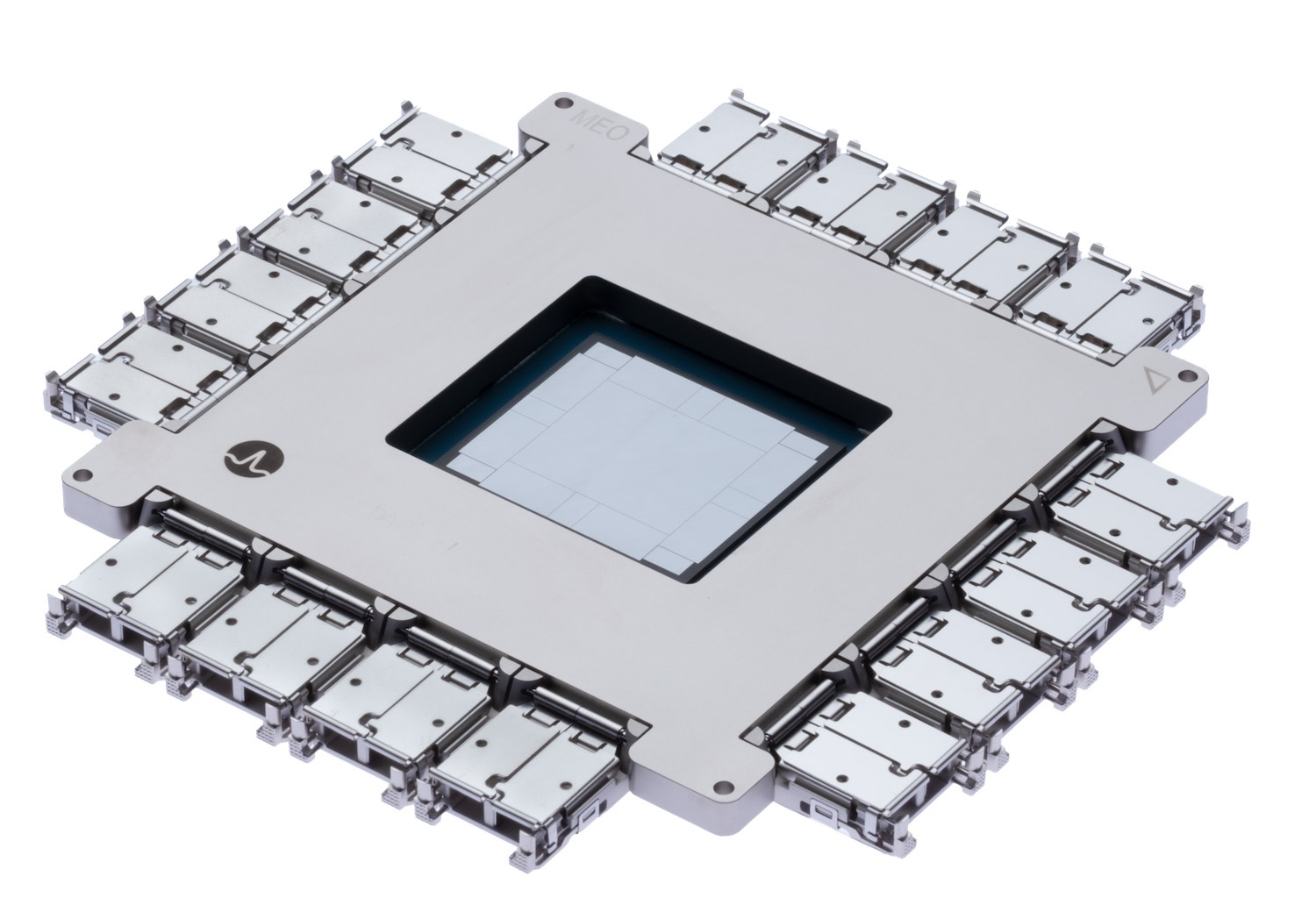Broadcom begins shipping the Tomahawk 6-Davisson CPO Ethernet switch, doubling the bandwidth to 102.4 Tb/s.
AI training and inference at scale are reshaping data center networks. East-west traffic between GPUs/XPUs has increased significantly, and legacy pluggable optics are struggling with power draw, latency, and physical complexity as clusters scale to tens of thousands of accelerators. Broadcom’s third-generation Co-Packaged Optics (CPO) platform, Tomahawk 6-Davisson (TH6-Davisson), is now shipping, bringing optically enabled switching capacity to 102.4 Tb/s, doubling the bandwidth of any CPO switch available today. For architects building next-generation AI fabrics, this marks a significant improvement in throughput, efficiency, and link reliability.

Purpose-Built for AI Networking
TH6-Davisson is engineered around the realities of modern AI clusters. This equates to sustained, high-rate east-west flows, sensitivity to link flaps, and the need to maximize accelerator utilization. Operating at 200 Gbps per channel, TH6-Davisson doubles the per-lane line rate and total bandwidth of the prior TH5-Bailly generation. It offers seamless interoperability across DR-based transceivers and Near-Packaged Optics (NPO) and CPO interconnects at 200 Gbps per channel. The result is straightforward scale-up and scale-out across today’s top-end NICs, XPUs, and fabric switches.
From a deployment perspective, this means:
- Higher effective FLOPs utilization by reducing link-induced stalls and job interruptions.
- Lower end-to-end latency versus traditional pluggables by shortening electrical paths and minimizing conditioning.
- A cleaner mechanical and thermal envelope at the switch, easing system integration at the rack and row scale.
Co-Packaged Optics: Power and Stability Advantages
Pluggable optics incur power penalties and introduce more points of variability as speeds increase. TH6-Davisson embeds optical engines directly on a shared package with the Ethernet switch, combining TSMC’s Compact Universal Photonic Engine (COUPE) technology with advanced substrate-level multi-chip packaging. This heterogeneous integration reduces the need for signal conditioning, minimizing trace loss and reflections.
According to Broadcom, benefits include:
- Approximately 70% reduction in optical interconnect power consumption relative to traditional pluggables. That’s more than 3.5 times lower, resulting in significant TCO and sustainability wins for hyperscale and AI data centers.
- Improved link stability by eliminating manufacturing and test variability typical of pluggable transceivers. A previous TH5-Bailly link flap study is referenced as evidence; TH6’s tighter integration further reduces flap events, which is pivotal for long-duration AI training runs.
Near Margalit, Vice President and General Manager of Broadcom’s Optical Systems Division, frames TH6-Davisson as an enabler for larger, more reliable AI clusters. He highlights gains in link stability and energy efficiency that drive higher accelerator utilization, fewer job disruptions, and improved overall reliability. These are key levers for faster and more efficient model training.
Interoperability and Standards Alignment
TH6-Davisson is designed to slot into heterogeneous environments, delivering:
- 200 Gbps per link with IEEE 802.3 compliance for 400G/800G interoperability.
- Compatibility with DR-based optics, plus NPO/CPO ecosystems at 200 Gbps per channel.
- Field-replaceable ELSFP laser modules to simplify serviceability without forfeiting the integration benefits of CPO.
This standards-focused approach is essential for procurement and network engineering teams that must integrate new deployments with existing 400G and 800G equipment while planning upgrade paths.
Product Highlights: TH6-Davisson BCM78919
- 102.4 Tb/s switching capacity
- 16 × 6.4 Tb/s Davisson DR optical engines
- 200 Gbps per channel link bandwidth
- Field-replaceable ELSFP laser modules
- Scale-up to 512 XPUs per cluster and up to 100,000+ XPUs in two-tier fabrics at 200 Gbps per link
- IEEE 802.3 compliant; interoperable with current 400G/800G standards
These specs translate to denser fabrics with fewer devices per unit of bandwidth, better power profiles, and higher expected job completion reliability. These points resonate directly in ROI/TCO models for AI buildouts.
400 Gbps Per Channel on Deck
Broadcom indicates that its fourth-generation CPO platform is in development, targeting 400 Gbps per-channel bandwidth with further energy efficiency gains. If realized, that trajectory would sustain a doubling cadence while continuing to reduce watts/bit, which is critical for the power-constrained realities of AI-scale data centers.
Availability
Broadcom is currently sampling the TH6-Davisson BCM78919 to early access customers and partners, with general availability to follow.
Co-packaged optics continues to appear to be the right tool for AI-era networking. They compress the electrical path, cut power, and stabilize links at the exact moment clusters are scaling to six figures of accelerators. TH6-Davisson’s 102.4 Tb/s capacity and 70% optical power reduction claim set an ambitious bar.
Engage with StorageReview
Newsletter | YouTube | Podcast iTunes/Spotify | Instagram | Twitter | TikTok | RSS Feed

